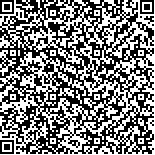| Quote
: |
肖莉,匡文轩,刘晓清,彭俊,彭清华,晏峻峰.糖尿病视网膜病变中医证型分布频率的Meta分析[J].湖南中医药大学学报英文版,2021,41(3):439-446.[Click to copy
] |
|
| |
|
|
| This paper
:Browser 2046times Download 592times |
| 糖尿病视网膜病变中医证型分布频率的Meta分析 |
| 肖莉,匡文轩,刘晓清,彭俊,彭清华,晏峻峰 |
| (湖南中医药大学, 湖南 长沙 410208;中医药防治眼耳鼻喉疾病湖南省重点实验室, 湖南 长沙 410007;湖南中医药大学, 湖南 长沙 410208;湖南省中医药防治眼耳鼻咽喉疾病与视功能保护工程技术研究中心, 湖南 长沙 410007;湖南省中医药防治眼耳鼻咽喉疾病与视功能保护工程技术研究中心, 湖南 长沙 410007;湖南中医药大学第一附属医院, 湖南 长沙 410007;湖南中医药大学, 湖南 长沙 410208;中医药防治眼耳鼻喉疾病湖南省重点实验室, 湖南 长沙 410007;湖南省中医药防治眼耳鼻咽喉疾病与视功能保护工程技术研究中心, 湖南 长沙 410007;湖南中医药大学第一附属医院, 湖南 长沙 410007) |
| 摘要: |
| 目的 系统客观定量地分析糖尿病视网膜病变中医证型分布频率,为其先验概率分布情况提供循证医学依据。方法 通过中国知网、维普、万方、CBM、PubMed、Embase等数据库检索关于糖尿病视网膜病变中医证型的相关文献,检索时限设定为建库至2020年6月4日,采用双人双机独立检索并交叉核对,并采用Rev Man 5.3软件进行Meta分析。结果 共纳入文献25篇,研究对象3350例。Meta分析结果显示:气阴两虚、脉络瘀阻证的分布频率为0.45[95% CI (0.33,0.58)];气阴两虚证的分布频率为0.44[95% CI (0.35,0.53)];瘀血阻滞证的分布频率为0.31[95% CI (0.17,0.49)];湿浊中阻证的分布频率为0.24[95% CI (0.01,0.47)];阴津不足、燥热内生证的分布频率为0.23[95% CI (0.04,0.42)];阴阳两虚证的分布频率为0.19[95% CI (0.15,0.23)];肝肾亏虚证的分布频率为0.17[95% CI (0.11,0.25)];阴阳两虚、血瘀痰凝证的分布频率为0.12[95% CI (0.07,0.19)];阴虚内热证的分布频率为0.05[95% CI (0.01,0.20)]。亚组分析结果显示:气阴两虚证在不同区域的分布情况的差异有统计学意义(P<0.05);肝肾亏虚证、阴阳两虚证在不同病程分布情况的差异有统计学意义(P<0.05)。结论 糖尿病视网膜病变的气阴两虚、脉络瘀阻证分布频率最高;气阴两虚证的分布情况存在地域差异;肝肾亏虚证、阴阳两虚证的分布频率与病程有关。 |
| 关键词: 糖尿病视网膜病变 中医证型 Meta分析 分布频率 |
| DOI:10.3969/j.issn.1674-070X.2021.03.022 |
| Received:October 15, 2020 |
| 基金项目:湖南省教育厅优秀青年基金项目(19B430);中医药防治眼耳鼻咽喉疾病湖南省重点实验室开放基金重点项目(2018YZD03);中医药防治眼耳鼻咽喉疾病湖南省重点实验室建设项目(2017TP1018)。 |
|
| A Meta-analysis of the Distribution Frequency of TCM Syndromes in Diabetic Retinopathy |
| XIAO Li,KUANG Wenxuan,LIU Xiaoqing,PENG Jun,PENG Qinghua,YAN Junfeng |
| (Hunan University of Chinese Medicine, Changsha, Hunan 410208, China;Hunan Provincial Key Laboratory for Prevention and Treatment of Ophthalmology and Otolaryngology Diseases with Chinese Medicine, Changsha, Hunan 410007, China;Hunan University of Chinese Medicine, Changsha, Hunan 410208, China;Hunan Provincial Engineering and Technological Research Center for Prevention and Treatment of Ophthalmology and Otolaryngology Diseases with Chinese Medicine and Protecting Visual Function, Changsha, Hunan 410007, China;Hunan Provincial Engineering and Technological Research Center for Prevention and Treatment of Ophthalmology and Otolaryngology Diseases with Chinese Medicine and Protecting Visual Function, Changsha, Hunan 410007, China;The First Affiliated Hospital of Hunan University of Chinese Medicine, Changsha, Hunan 410007, China;Hunan University of Chinese Medicine, Changsha, Hunan 410208, China;Hunan Provincial Key Laboratory for Prevention and Treatment of Ophthalmology and Otolaryngology Diseases with Chinese Medicine, Changsha, Hunan 410007, China;Hunan Provincial Engineering and Technological Research Center for Prevention and Treatment of Ophthalmology and Otolaryngology Diseases with Chinese Medicine and Protecting Visual Function, Changsha, Hunan 410007, China;The First Affiliated Hospital of Hunan University of Chinese Medicine, Changsha, Hunan 410007, China) |
| Abstract: |
| Objective To systematically, objectively and quantitatively evaluate the distribution of TCM syndrome types of diabetic retinopathy, and provide evidence-based medicine basis for its prior probability distribution. Methods Such databases as CNKI, VIP, Wanfang academic journal full-text database, CBM, PubMed, EMBASE were searched from the establishment of the database to June 4, 2020. Two researchers independently screened literatures according to the inclusion and exclusion criteria and crosschecked it. And then meta-analysis was performed by using Rev Man 5.3 software. Results 25 literatures involving 3 350 cases were included. The results of meta-analysis showed that the distribution frequency of qi and Yin deficiency, blood stasis syndrome was 0.45[95% CI (0.33, 0.58)]; the distribution frequency of qi-Yin deficiency syndrome was 0.44[95% CI (0.35, 0.53)]; the distribution frequency of blood stasis syndrome was 0.31[95% CI (0.17, 0.49)]; the distribution frequency of dampness and turbidity syndrome was 0.24[95% CI(0.01, 0.47)]; Yin and Jin deficiency and dry heat endogenous syndrome was 0.23[95% CI (0.04, 0.42)]; the distribution frequency of Yin-Yang deficiency syndrome was 0.19[95% CI (0.15, 0.23)]; the distribution frequency of liver-kidney deficiency syndrome was 0.17[95% CI (0.11, 0.25)]; the distribution frequency of syndrome of deficiency of Yin and Yang, blood stasis and phlegm coagulation was 0.12[95% CI (0.07, 0.19)]; the distribution frequency of syndrome of internal heat of yin deficiency was 0.05[95%CI(0.01, 0.20)]. The results of subgroup analysis showed that there was statistical significance in the distribution of qi-Yin deficiency syndrome in different regions (P<0.05). There were statistical significance in the distribution of liver-kidney deficiency syndrome and Yin-Yang deficiency syndrome in different course of disease (P>0.05). Conclusion Deficiency of qi and Yin, blood stasis syndrome was the most frequent TCM syndrome types of diabetic retinopathy. There is regional difference in the distribution of qi-Yin deficiency syndrome. The distribution frequency of liver-kidney deficiency syndrome and Yin-Yang deficiency syndrome are related to the course of the disease. |
| Key words: diabetic retinopathy TCM types of syndrome meta-analysis distribution frequency |
|

二维码(扫一下试试看!) |
|
|
|
|


